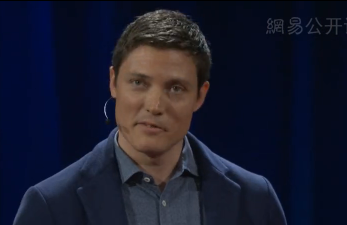We worked with Bruce Nizeye, a brilliant engineer,
我們跟Bruce Nizeye一起工作,他是一個非常了不起的工程師,
and he thought about construction differently than I had been taught in school.
對于建筑,他對我從學校學來的那一套有不同的看法。
When we had to excavate this enormous hilltop and a bulldozer was expensive and hard to get to site,
當我們必須在這個巨大的山頂挖掘的時候,推土機的消費昂貴而且難以到達那里,
Bruce suggested doing it by hand, using a method in Rwanda called "Ubudehe," which means "community works for the community."
Bruce建議用雙手來解決,借助在盧旺達叫做“Ubedehe(愚公移山)”的方法,叫做“社區工作為社區服務”。
Hundreds of people came with shovels and hoes,
幾百人帶著鐵鍬和鋤頭來到現場,
and we excavated that hill in half the time and half the cost of that bulldozer.
我們用了一半的時間和一半的推土機的費用挖掘了山頂。
Instead of importing furniture, Bruce started a guild, and he brought in master carpenters to train others in how to make furniture by hand.
Bruce帶來了木匠大師,讓他們來給其他人面授機宜,教導如何在現場手工做家具,所以我們就不用進口家具了。

And on this job site, 15 years after the Rwandan genocide,
在盧旺達人的種族滅絕15年后,
Bruce insisted that we bring on labor from all backgrounds, and that half of them be women.
Bruce堅持我們需要各種背景的勞動者,其中一半是女人。
Bruce was using the process of building to heal, not just for those who were sick, but for the entire community as a whole.
Bruce利用建筑來治療,不僅是為那些病人,而且是把整個社區團結起來。
We call this the locally fabricated way of building, or "lo-fab," and it has four pillars:
我們把這個叫做當地人赤手空拳的建筑,或者是“當地--奇跡”,它有四根立柱:
hire locally, source regionally, train where you can and most importantly,
從當地雇傭的工人,就地取材,訓練學徒,而最重要的,
think about every design decision as an opportunity to invest in the dignity of the places where you serve.
想想每個設計的決策是一個機會,給你所服務的地方高貴的投資。
Think of it like the local food movement, but for architecture.
對建筑來說,把它作為當地的食品運動。
And we're convinced that this way of building can be replicated across the world,
我們有理由認為這種建筑可以在全世界翻版再建,
and change the way we talk about and evaluate architecture.
改變我們所說的評估構架。











